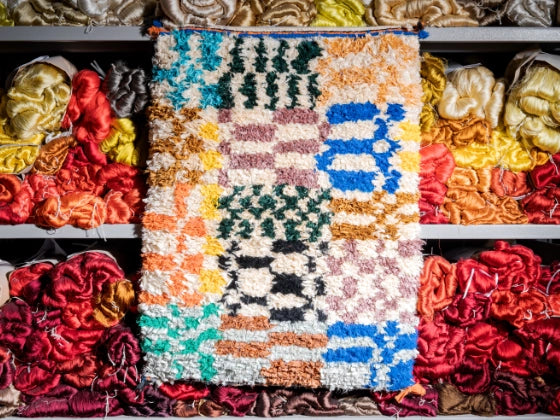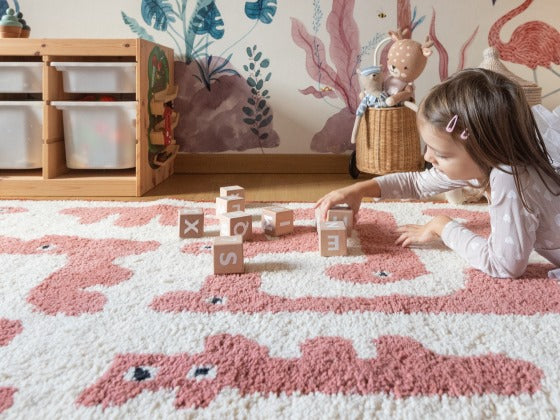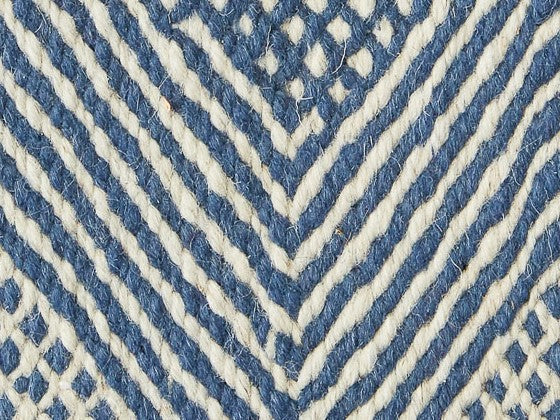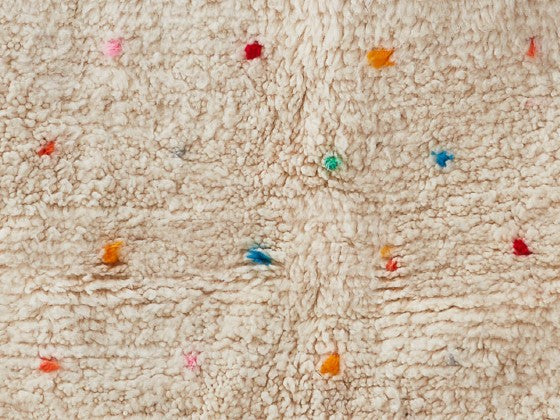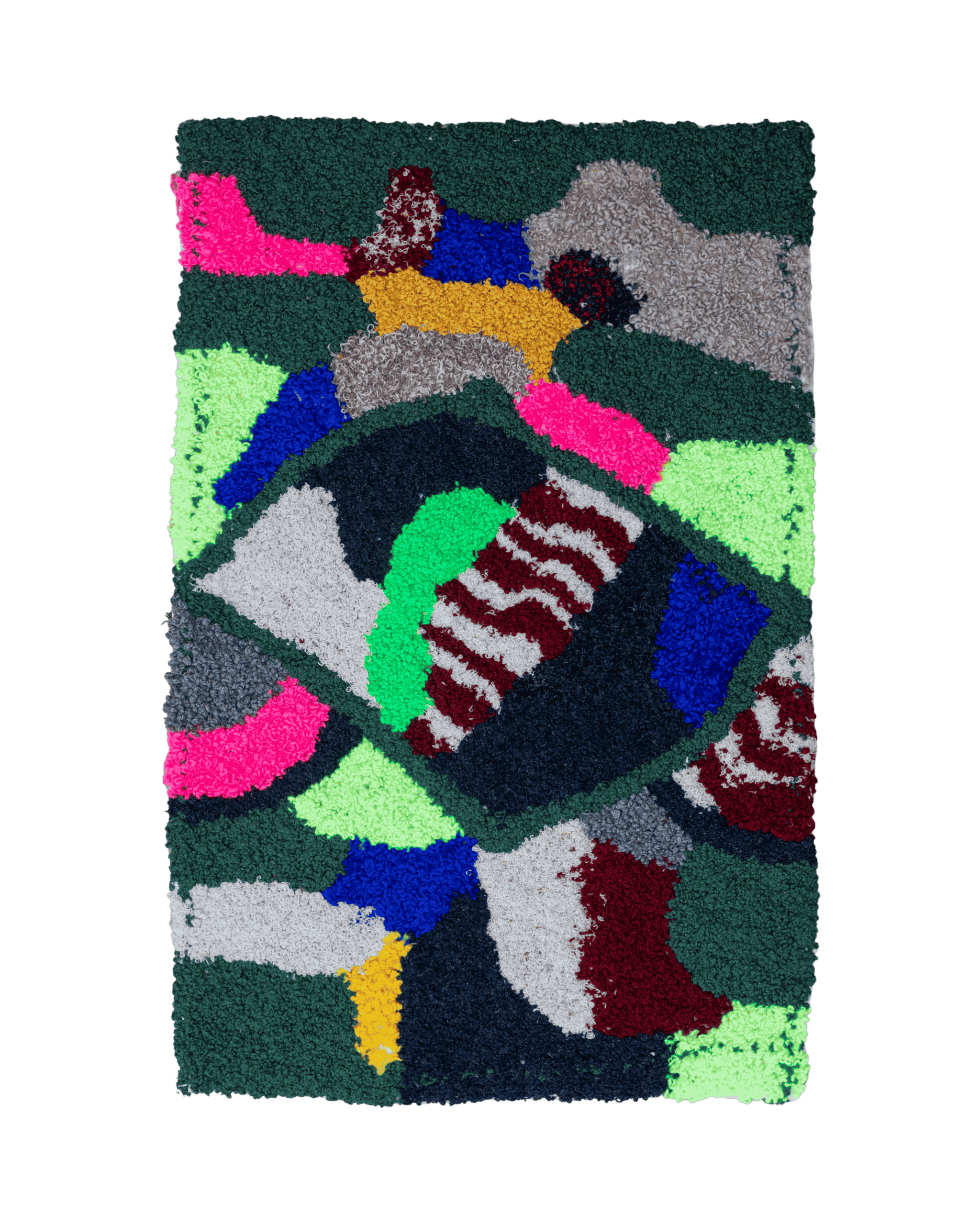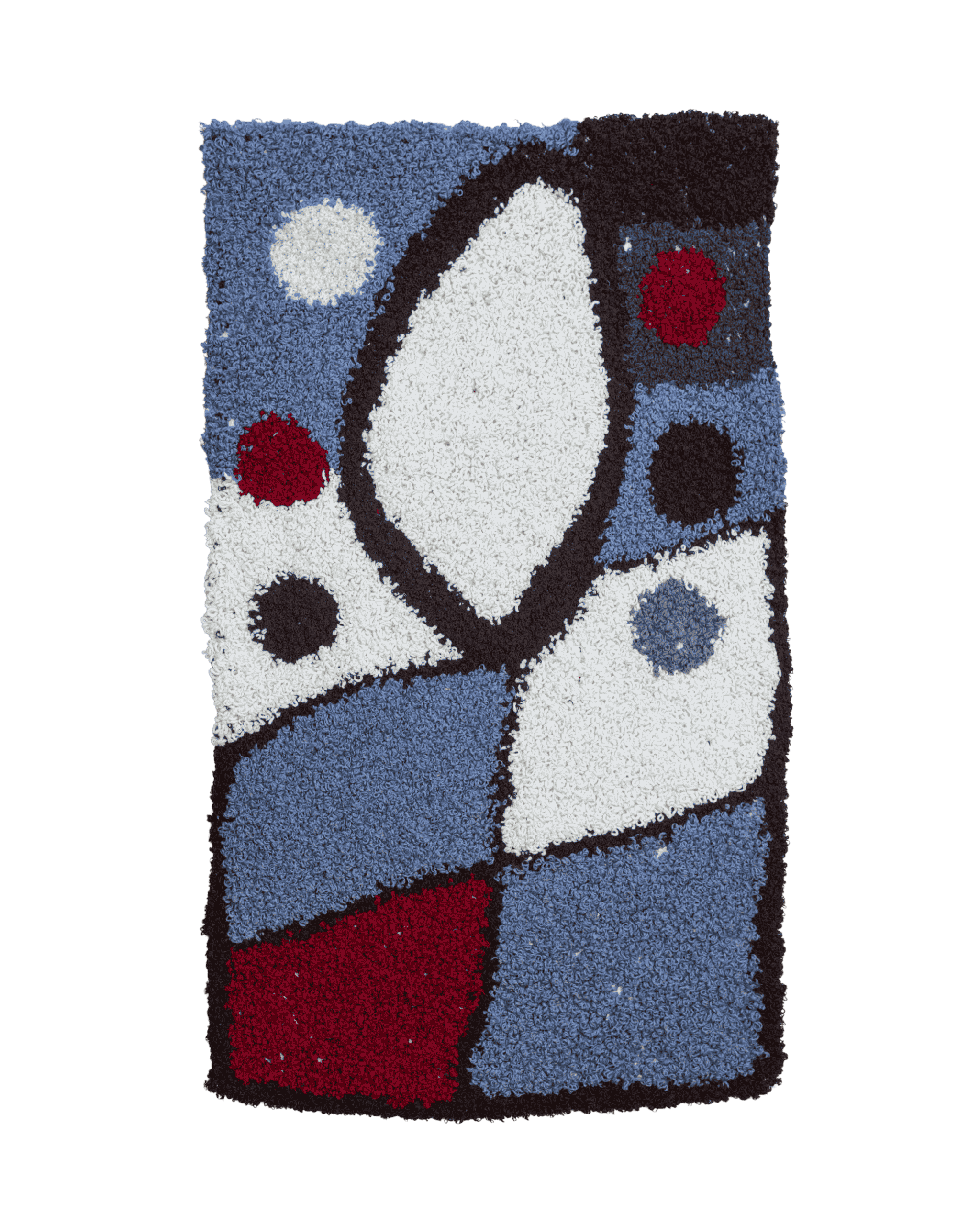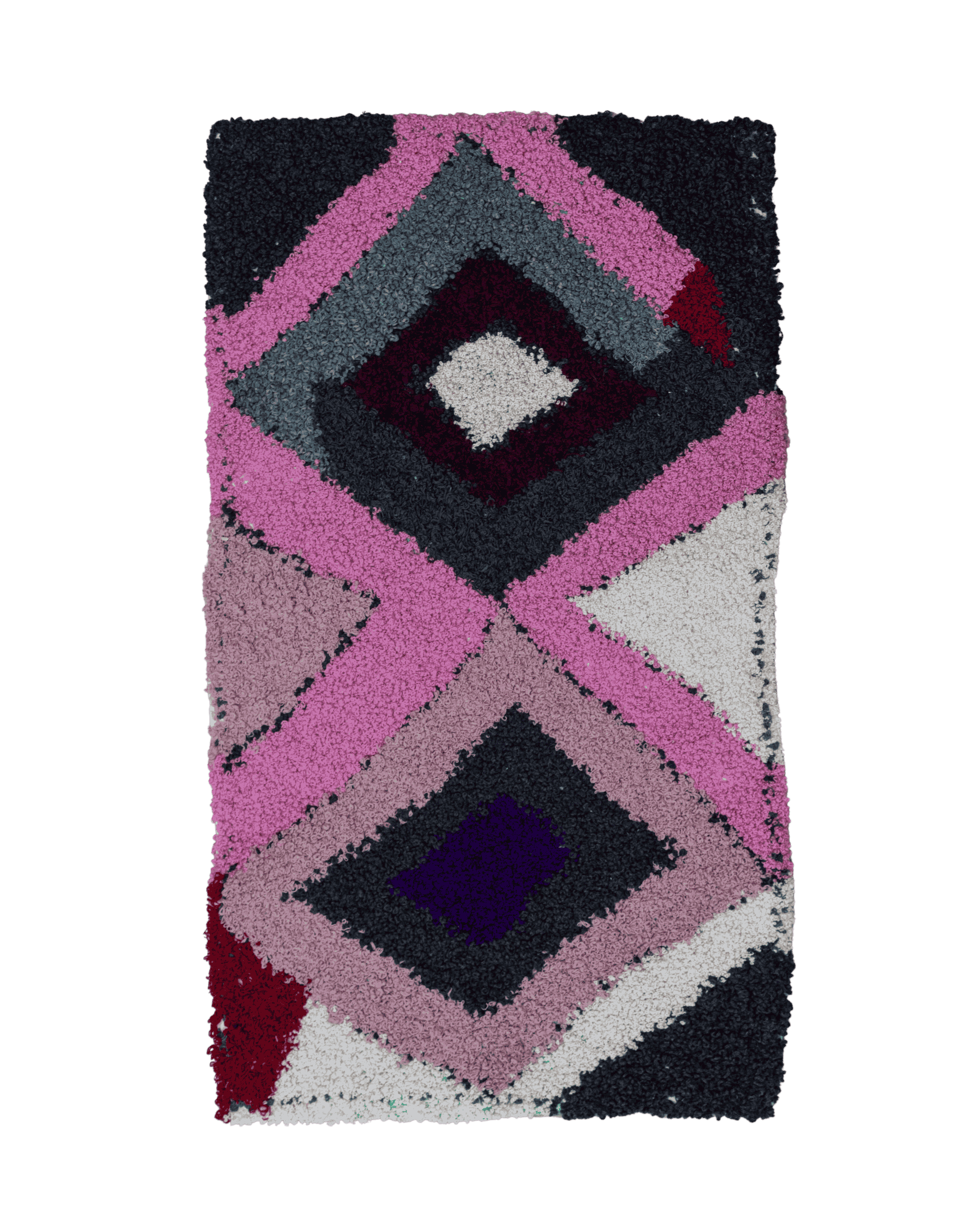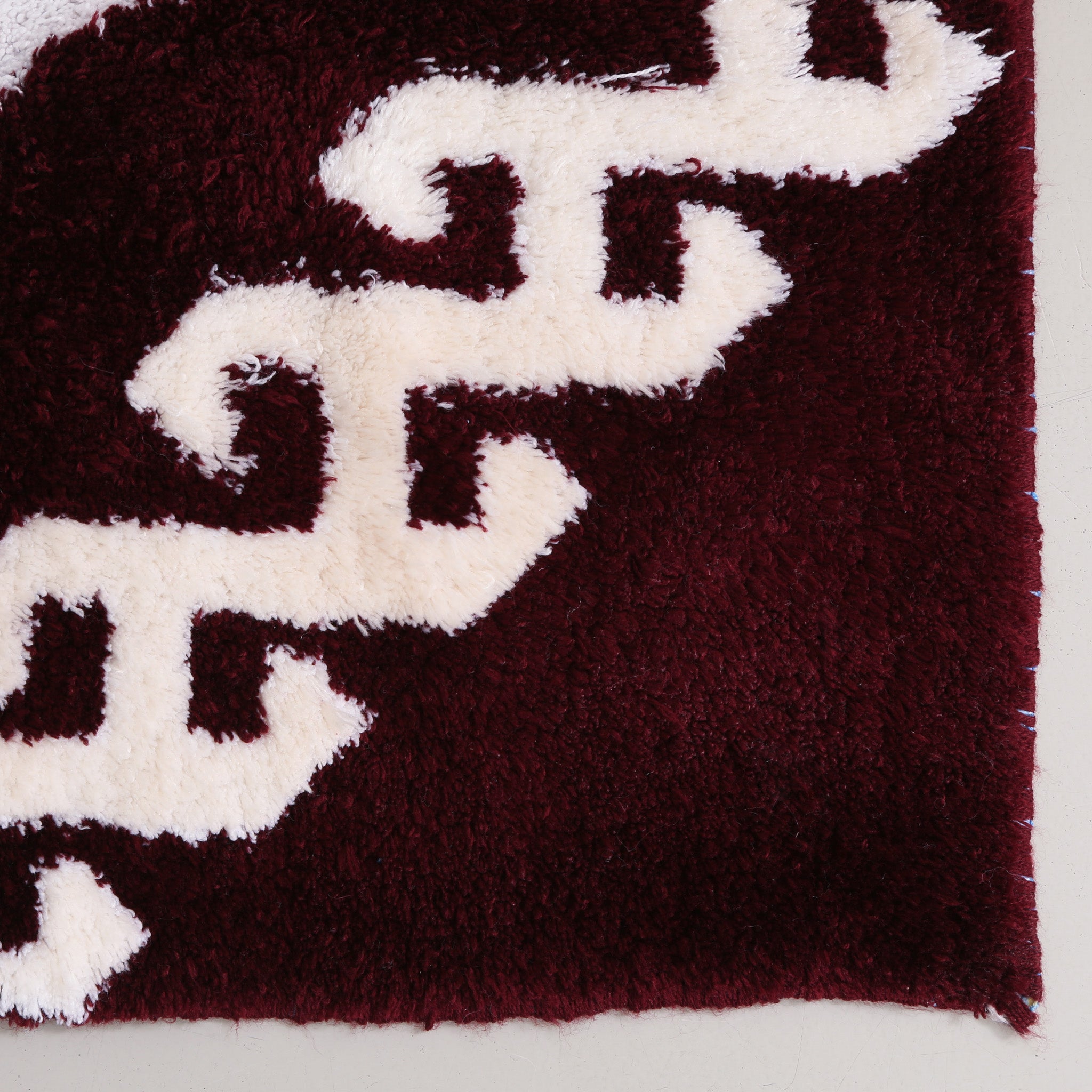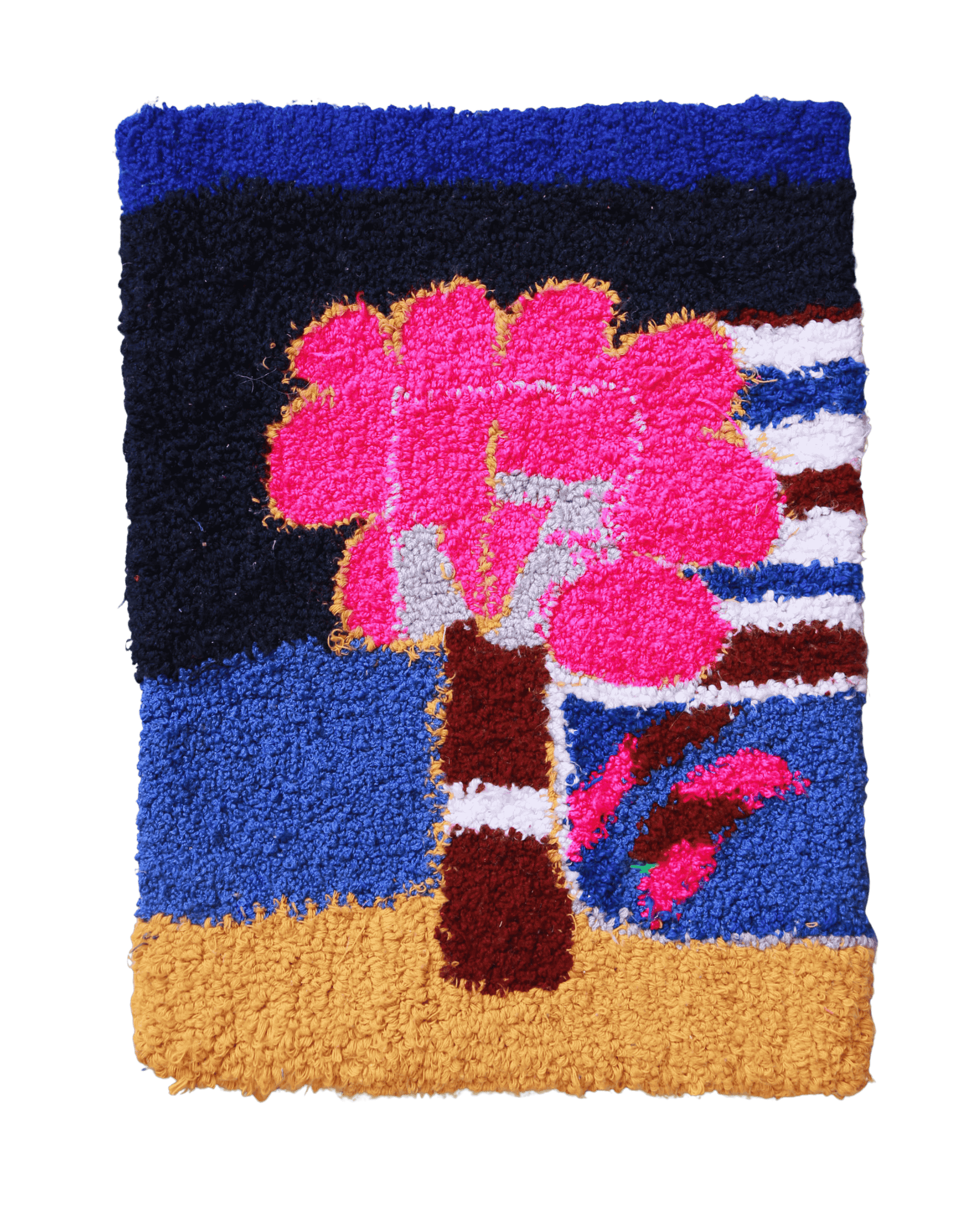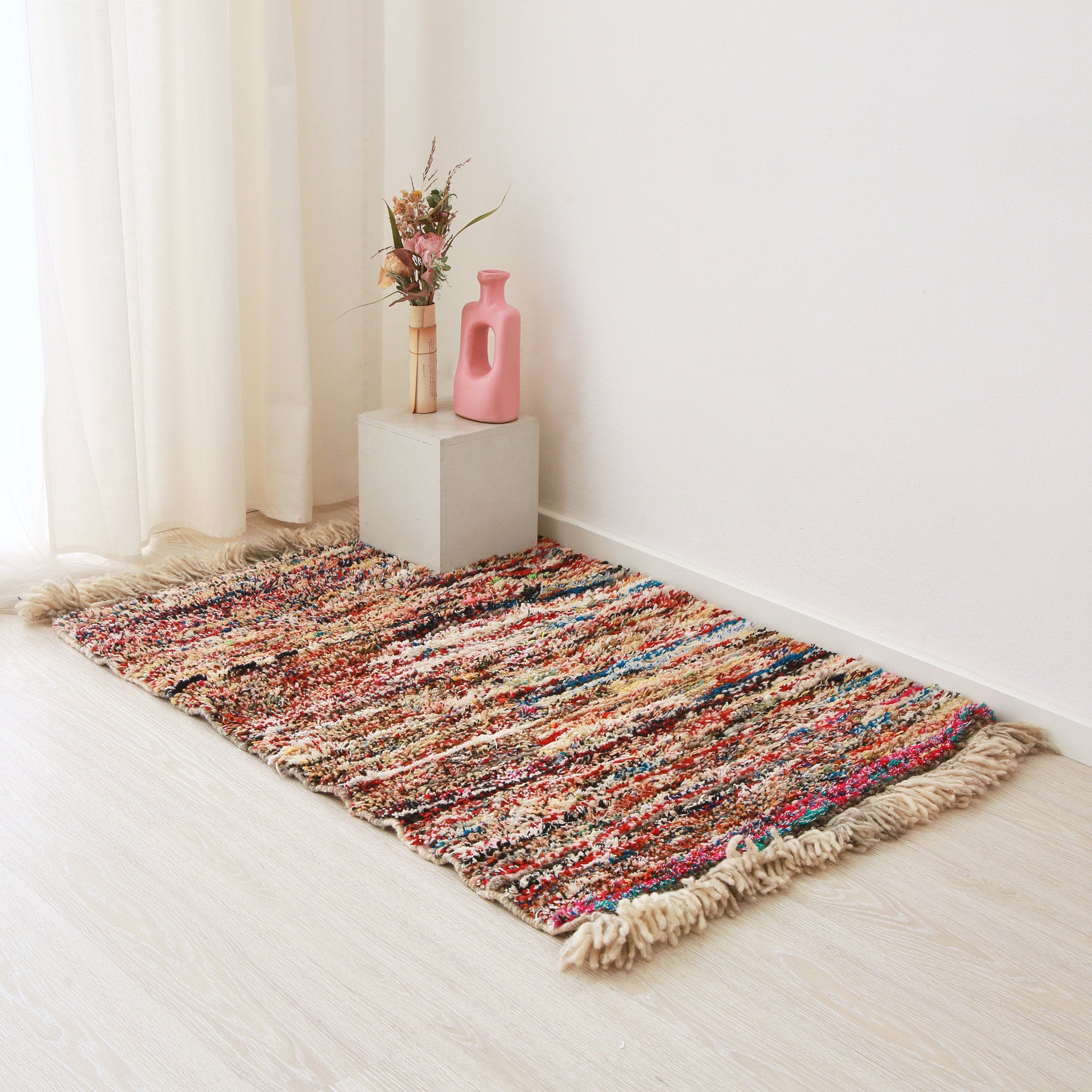Boucherouite Rugs
Boucherouite recycled fabric rugs tell the story of creativity, imagination and resilience of Moroccan women. Modern and cutting-edge for the virtuous use of waste materials, they are true multicolored jewels of recycling. Or rather: of upcycling. They can be made with unusable t-shirts, cotton dress fabric, residues of wool recovered from old rugs or blankets, scraps of fabrics. But also with plastic bags and mixed yarns such as nylon. The latest trend sees the creation of rugs with old recycled jeans, an eco-friendly trend that we support because, remember, denim is one of the most polluting products in the fashion industry.
Boucherouites no longer have the status of a “humble carpet”: they can be found in museums, by collectors and in the homes of those who love objects with a strong personality. Because of their resistance, they are perfect for giving character to a simple bathroom or a modern kitchen. What is certain is that they bring joy and vivacity to every room of the house!
Filters
Filters
The word “Boucherouite” (or boucharouette) means “made of rags” and comes from the Moroccan Arabic “Bu Sherwit”, which we could translate as “piece of second-hand material” or “fragment taken from a used dress”. They were born as an original solution to difficulties. When wool was too expensive, Amazigh artisans did not give up: they continued to make carpets for their homes, recycling old fabrics used by their loved ones. Each carpet was a very personal creation, which told the story of the family: the first dress of the older brother, the summer skirt of the little sister, the grandfather’s djellaba, the dress worn by the artisan for an important celebration…
Today in boucherouite rugs we can find fabrics, plastics and textile fibres of any kind. The artisans mix them with extreme mastery and spontaneity, using ancient hand-knotting techniques on traditional looms. The patterns, often coloured, are usually geometric but not perfectly regular: checks and squares, lines that chase each other irregularly, stripes, zigzags and kaleidoscopic melange patterns that integrate the most disparate materials. The texture is another very interesting factor: by including different materials, they are very particular to the touch.





